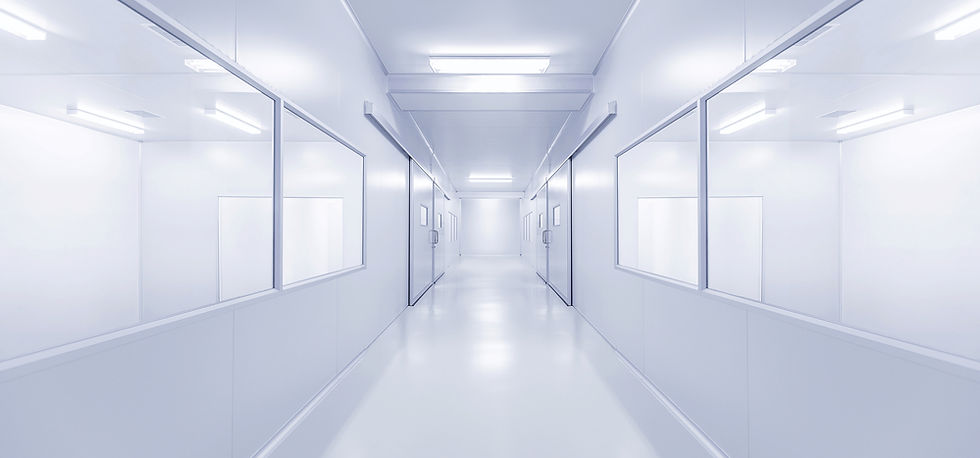Understanding Cleanroom Classifications: How Clean Are Cleanrooms?
- Pacific Panels
- Mar 12, 2024
- 2 min read

When it comes to cleanrooms, the primary focus is on maintaining a highly controlled environment with minimal particulate contamination. But just how clean are cleanrooms? In this article, we'll explore cleanroom classifications and the role of cleanroom panels in achieving and maintaining the required levels of cleanliness.
Cleanroom Classifications
Cleanrooms are classified according to the number and size of particles permitted per volume of air. The most widely used standard for cleanroom classification is the ISO 14644-1, which categorizes cleanrooms from ISO Class 1 to ISO Class 9. The lower the ISO Class number, the cleaner the room.
For example, an ISO Class 5 cleanroom allows for a maximum of 100,000 particles (0.1 μm or larger) per cubic meter of air, while an ISO Class 8 cleanroom allows for a maximum of 3,520,000 particles (0.5 μm or larger) per cubic meter of air.
Achieving and Maintaining Cleanliness
To achieve and maintain the required cleanliness levels, cleanrooms employ various strategies, including:
1. High-Efficiency Particulate Air (HEPA) Filters: These filters remove 99.97% of particles that are 0.3 microns or larger, ensuring a constant supply of clean air.
2. Airflow Management: Cleanrooms are designed with specific airflow patterns (laminar or turbulent) to control the direction and speed of air, minimizing particle accumulation.
3. Cleanroom Panels: Walls, ceilings, and doors made from cleanroom panels play a crucial role in maintaining cleanliness. Cleanroom panels, such as those made from aluminum honeycomb, provide a smooth, non-porous, and easy-to-clean surface that minimizes particle shedding and prevents contamination.
4. Strict Protocols: Cleanroom staff must follow stringent protocols, including proper gowning, regular cleaning, and minimizing unnecessary movement to prevent particle introduction and disturbance.
The Importance of Cleanroom Panels
Cleanroom panels are essential components in achieving and maintaining the required cleanliness levels in cleanrooms. Aluminum honeycomb cleanroom panels, in particular, offer several advantages:
1. Non-Shedding: The smooth, non-porous surface of aluminum honeycomb panels minimizes particle shedding, reducing the risk of contamination.
2. Durability: Aluminum honeycomb cleanroom panels are resistant to impact, moisture, and chemicals, ensuring long-lasting performance in demanding cleanroom environments.
3. Easy Maintenance: The smooth surface of cleanroom panels allows for easy cleaning and sanitization, helping maintain the required cleanliness levels.
4. Customization: Cleanroom panels can be customized to fit specific dimensions, configurations, and ISO Class requirements, ensuring optimal performance in various cleanroom applications.
Keep it Clean
The cleanliness of cleanrooms is determined by the ISO Class standards, which specify the allowable number and size of particles per volume of air. Achieving and maintaining these cleanliness levels requires a combination of HEPA filtration, airflow management, strict protocols, and the use of high-quality cleanroom panels, such as those made from aluminum honeycomb. By understanding the role of cleanroom panels in maintaining cleanliness, facility managers can make informed decisions when designing and upgrading their cleanroom spaces.

Comments